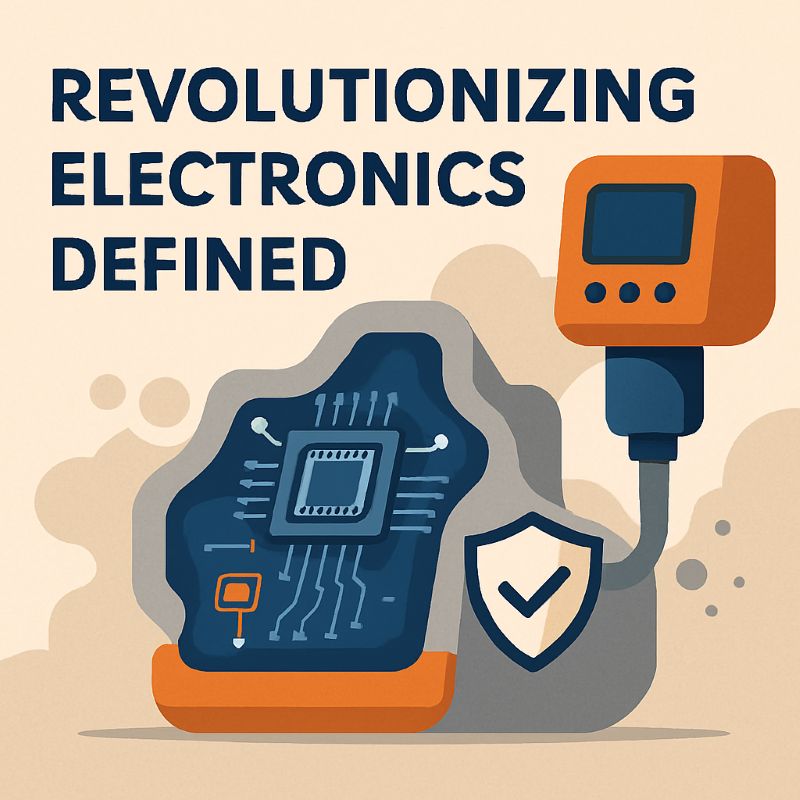
Revolutionizing Electronics Defined
Types of Low Pressure Molding
Importance in Electronics
Methods of Low Pressure Molding
Latest Trends in Electronics
Strategies for Implementation
Future of Electronics Revolution
Low pressure molding (LPM) is reshaping the landscape of electronics by providing a safer, cleaner, and more efficient way to encapsulate delicate components. This process uses thermoplastic materials to form a protective seal, shielding electronics from moisture, dust, and mechanical stress. As the technology advances, it continues to set new standards for reliability and performance in device manufacturing.
Low pressure molding encompasses various techniques tailored to specific component requirements. Overmolding involves applying a secondary protective layer to components, making it suitable for connectors, sensors, and PCBs. Hot melt molding utilizes thermoplastic materials that melt at low temperatures, allowing quick encapsulation without damaging sensitive parts. These approaches not only enhance durability but also optimize production cycles through cleaner, more precise processing.
LPM plays a critical role in ensuring the resilience of electronic devices. By offering gentle yet effective encapsulation, it significantly reduces the risk of damage during assembly and throughout product use. It is especially vital for consumer electronics, automotive modules, and industrial sensors that must operate reliably in harsh environments. Integrating this method leads to longer product lifespans and fewer failure rates, translating into improved consumer satisfaction and reduced warranty costs.
Key methods in low pressure molding include:
Overmolding, which provides physical protection while maintaining device flexibility.
Encapsulation, where components are fully enclosed to prevent contamination and mechanical wear.
Injection-based low pressure systems, offering precision control for complex assemblies.
These methods adapt well to different product scales and complexity, making LPM a versatile solution in electronics manufacturing.
The field of LPM is evolving rapidly alongside electronics design. Current trends include:
Smaller form factor applications, requiring even more precise molding control.
Integration with automated systems to improve repeatability and reduce labor costs.
Eco-conscious material development, such as biodegradable and halogen-free compounds, aligning with global regulatory trends.
These advancements are driving LPM adoption across sectors seeking greener, faster, and more reliable production methods.
Successful implementation of low pressure molding starts with identifying suitable components and evaluating thermal and mechanical requirements. Selecting thermoplastics with the right viscosity and temperature resistance is key. Integrating semi- or fully automated machines can streamline the process and reduce cycle times. Clear operator training, prototyping, and continuous monitoring ensure that molding delivers consistent, defect-free results.
Low pressure molding is expected to play a central role in the future of electronics, especially as devices become smaller, more complex, and more integrated into daily life. Innovations in material science and process automation are likely to reduce costs and environmental impact. As regulatory pressure increases for safer and more sustainable manufacturing, LPM stands out as a forward-compatible solution for the electronics industry.
What is low pressure molding?
Low pressure molding is a process where electronic components are encapsulated using low-temperature thermoplastic materials to provide environmental protection and mechanical stability.
What are common types of LPM techniques?
Common types include overmolding, hot melt molding, and full encapsulation, each offering tailored protection depending on the component and application.
Why is LPM important in electronics?
LPM helps extend the life of electronic devices by shielding them from external stress factors like moisture, dust, and impact, making it essential for high-performance reliability.
What materials are typically used in LPM?
Thermoplastic compounds with low viscosity and thermal sensitivity are commonly used, selected based on factors such as adhesion, environmental resistance, and component compatibility.
What trends are shaping the future of LPM?
Key trends include miniaturized application techniques, eco-friendly material development, and automation integration to support high-volume production needs.
How should manufacturers approach LPM integration?
Manufacturers should assess which components benefit most, select suitable molding compounds, ensure operator training, and adopt automation for scalability and consistency.
What role will LPM play in future electronics?
LPM is set to become increasingly important as electronics evolve, offering reliable protection while aligning with industry needs for speed, safety, and sustainability.
Does LPM improve manufacturing efficiency?
Yes, LPM reduces defects, shortens cycle times, and supports clean-room-compatible operations, making it a smart investment for efficient electronics production.